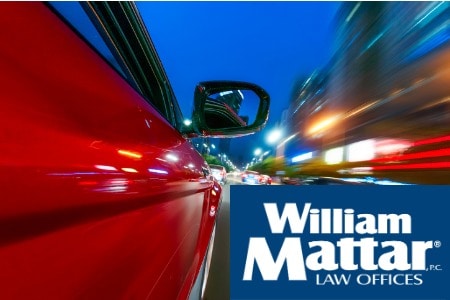

(844) - 444-4444

The AAA Foundation for Traffic Safety defines aggressive driving as “any unsafe driving behavior, performed deliberately and with ill intention or disregard for safety.”
How unsafe is aggressive driving? Besides sometimes leading to dangerous incidents of road rage, aggressive driving is risky in its own right, contributing to many crashes, some of which being fatal. Indeed, aggressive driving behaviors are a factor in up to 56 percent of fatal car accidents, according to a AAA Foundation for Traffic Safety study.
And, according to some sources, aggressive driving is becoming more common. A 2014 AAA survey found that more than three-quarters of U.S. drivers had driven aggressively at least once in the past year, one in three had made an angry gesture at another motorist, and half had intentionally tailgated someone.
Drivers can get frustrated and become aggressive in traffic jams or bad weather or when other motorists’ driving annoys them.
Aggressive drivers pose a risk of danger to others on the road. Here are seven potential warning signs that another motorist may be engaging in aggressive driving behaviors.
Much aggressive driving is fueled by impatience, which leads to speeding, which, according to the NHTSA, contributed to 29 percent of traffic fatalities in 2021.
At intersections and interchanges, right-of-way is critical; those who don’t have it must yield to those who do. Aggressive drivers may plunge ahead regardless of who has the right of way. The result can be deadly.
Aggressive drivers often weave in and out of traffic. This, too, is risky; reckless lane changes cause 9 percent of all accidents in the United States and annually injure 35,000 people, according to some sources.
Failure to use turn signals is one of the more common causes of accidents because it prevents other motorists from anticipating a roadway maneuver. Such actions can cause or contribute to a crash and is illegal in New York State.
Some aggressive drivers deliberately block a lane of traffic to frustrate motorists. Deliberately blocking a lane of traffic can slow down traffic for everyone else and further frustrate the other driver.
A tailgating driver deliberately drives too close to the preceding vehicle, which may significantly increase the risk of a rear-end collision. Not only that, tailgating drivers may pose a danger to other drivers around them, since they may behave unpredictably.
While some drivers may follow too closely due to traffic constraints, aggressive drivers often tailgate to force the driver in front of them to drive faster or get out of the way. But tailgating is dangerous and illegal. Tailgaters give themselves little if any time to react to other vehicles, thereby risking a swerving crash or rear-end collision. Under New York law, drivers must follow other motorists at a “reasonable and prudent” distance. According to New York courts, “[a] rear-end collision with a stopped or stopping vehicle creates a prima facie case of negligence with respect to the operator of the moving vehicle and imposes a duty on the operator of the moving vehicle to come forward with an adequate, [nonnegligent] explanation for the accident.”
Aggressive drivers also might
Why do some drivers get so angry and feel okay about acting on it? It is impossible to know for sure, but many drivers feel anonymous and unaccountable in ways that make them more aggressive or less inhibited. That is a mistake. All actions, including those taken behind the wheel of an automobile, have consequences.
Aggressive driving or road rage often can sometimes be traced to stressors such as financial issues, arguments with a significant other, or work-related problems. Traffic congestion or gridlock also may play a part. People who feel they might be late or miss an important appointment or crucial meeting may become impatient, frustrated, even angry.
Some aggressive drivers have serious emotional problems and may even be suffering from a mental health issue. They can objectify other drivers, making them the subject of deep-seated anger. It is important to keep these things in mind if you come face-to-face with an aggressive driver after a car crash. While every situation is unique and it is not possible to generalize, to the extent possible, it may be advisable to avoid interaction until the police arrive.
Every encounter with an aggressive driver is unique, dependent on traffic and road conditions, among many other factors. The suggestions in this blog post are not meant to serve as a universal response to aggressive-driver encounters. For more information, you can check out the Governor’s Traffic Safety Committee website on aggressive driving.
If you’ve been injured by an aggressive driver, call William Mattar. We can help you get maximum compensation for pain and suffering.
At William Mattar, P.C. our accident injury attorneys can help you after your car accident. If you sustained personal injuries, you may be entitled to compensation. Call our car accident lawyers today, at 844-444-4444, to file a claim. Or complete our online form requesting a free consultation.





